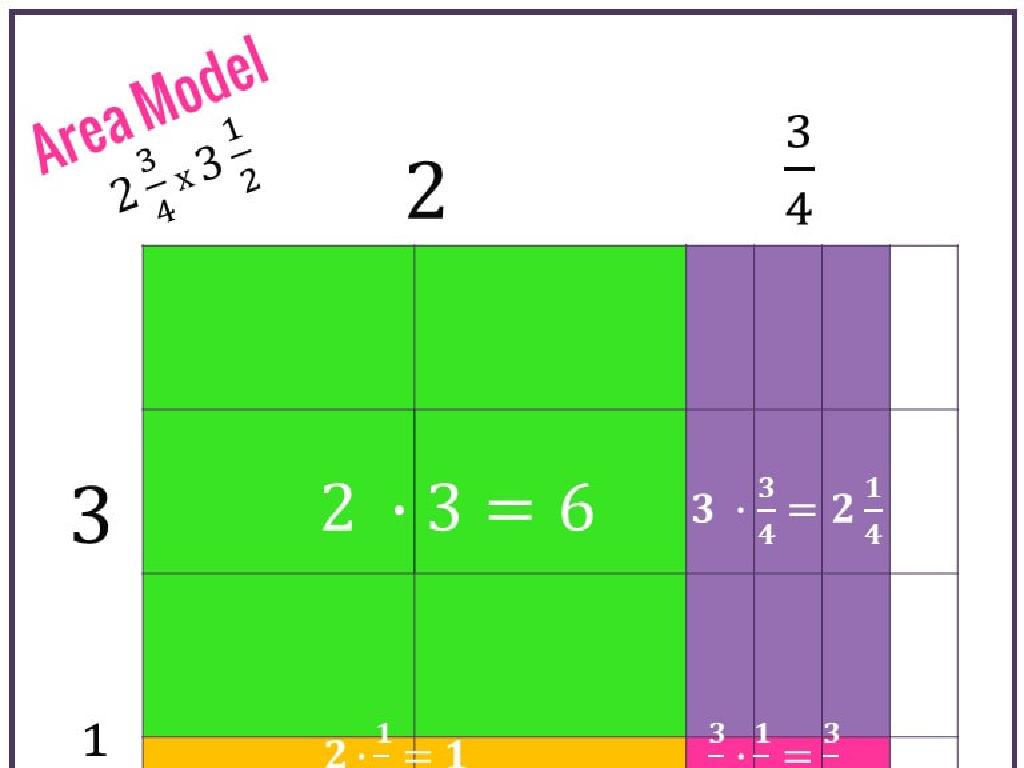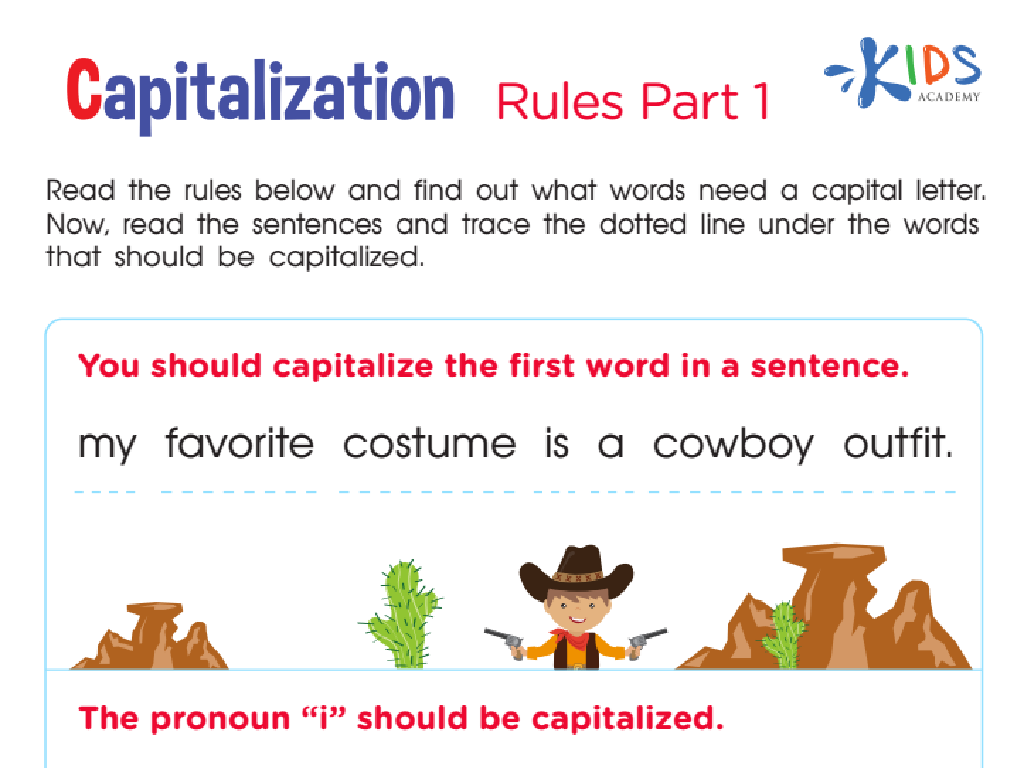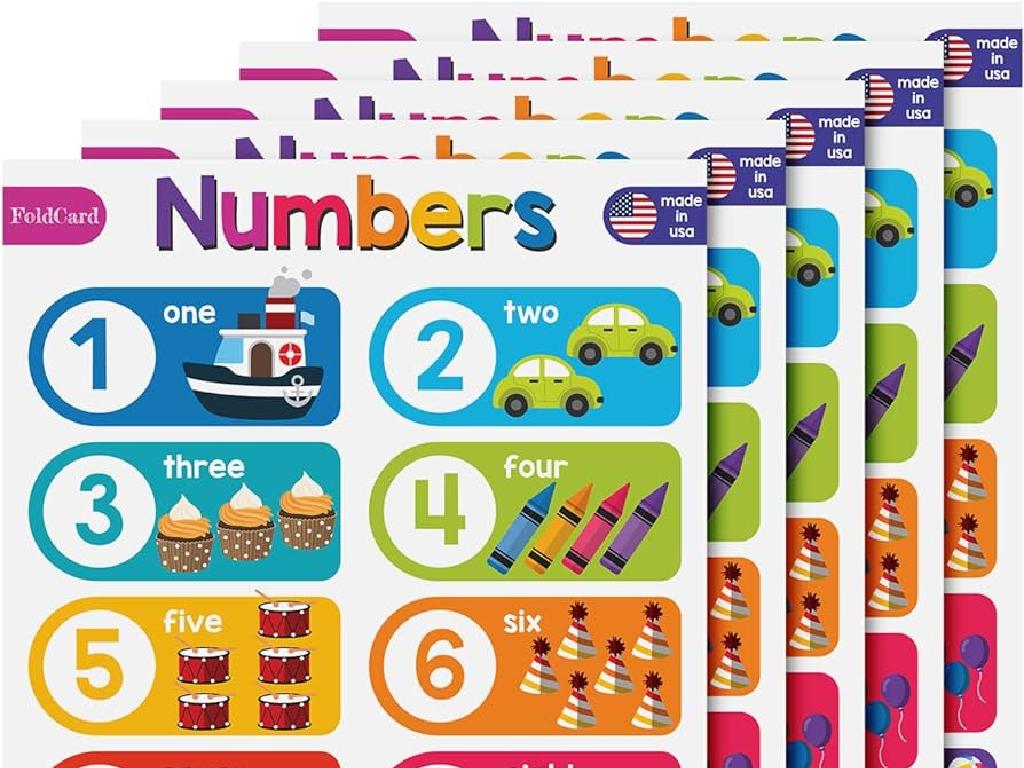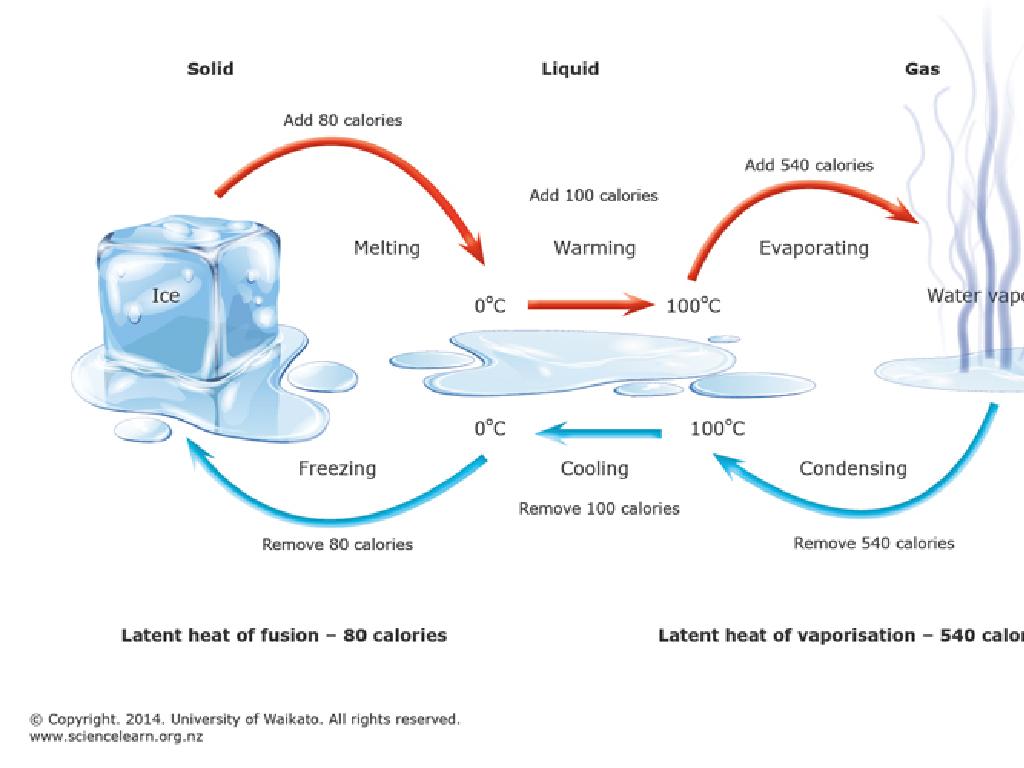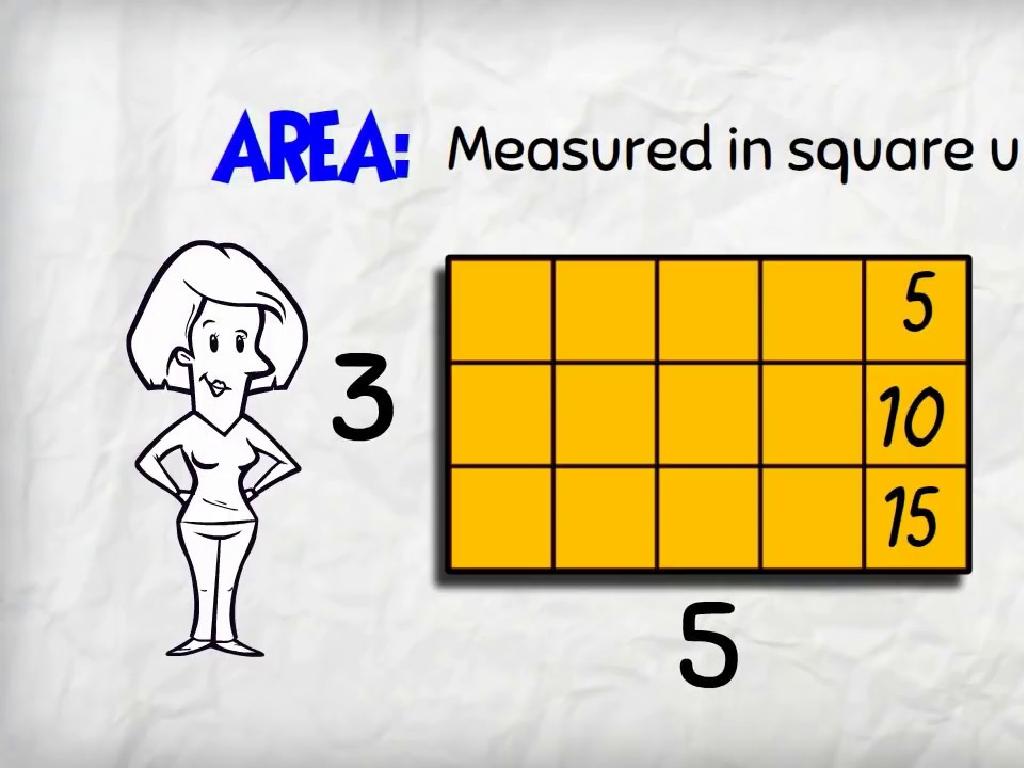Price Lists With Addition And Subtraction
Subject: Math
Grade: Fourth grade
Topic: Money
Please LOG IN to download the presentation. Access is available to registered users only.
View More Content
Welcome to Money Math!: Price Lists
– Money’s role in daily life
– Daily uses of money
– Buying food, toys, saving for goals
– Introduction to price lists
– A list showing the cost of items
– Adding and subtracting prices
– Combine item costs and calculate change
|
This slide introduces students to the concept of money, its importance in everyday life, and the basics of price lists. Begin by discussing the various uses of money, such as purchasing goods and services or saving for future expenses. Explain that a price list is a tool that stores use to display the cost of items for sale. Emphasize the practical skill of adding and subtracting prices from a price list to calculate total costs and change due. Use relatable examples like buying school supplies or snacks. Encourage students to think of times they have used money and to share their experiences. This will set the foundation for more complex money-related math problems.
Understanding Price Lists
– What is a price list?
– A chart showing the cost of items for sale
– Examples in everyday shopping
– Grocery store aisles, restaurant menus, online shops
– The role of price lists
– Helps us compare costs and budget our money
– Calculating total costs
– Add prices for all items to find total; subtract for discounts
|
This slide introduces the concept of a price list, which is a fundamental tool for understanding money management. It’s essential for students to recognize price lists from everyday experiences, such as shopping with family. Discuss the importance of price lists in making informed purchasing decisions and how they aid in budgeting. Engage the class with examples of adding up items from a price list to calculate a total cost and subtracting discounts to see how much money can be saved. Encourage students to think of times they have used price lists in real life and to practice creating their own lists with addition and subtraction for a mock shopping activity.
Adding Prices Together
– Learn to add prices for total cost
– Combine item costs to find how much we spend
– Add prices of chosen items
– If we want a toy ($5) and a book ($3), what’s the total?
– Practice with a price list
– Use a sample price list to add costs of different items
|
This slide introduces the concept of adding prices together to find the total cost, which is a practical application of addition in everyday life. Start by explaining how to add two or more prices together. Use relatable examples, such as combining the cost of a toy and a book. For practice, provide a price list with various items and ask students to calculate the total cost of purchasing multiple items. This activity helps students understand the concept of addition in a real-world context and prepares them for managing money effectively. Encourage students to think about what they might want to buy and how to add those prices together to ensure they have enough money before making purchases.
Subtracting Prices: Keeping Track of Your Money
– Learn to subtract to find remaining money
– If you have $10 and you buy a toy for $3, how much do you have left?
– Subtract item costs from your budget
– Imagine you have $20 for a school fair. If a game costs $5, how much of your budget is left?
– Practice calculating change from purchases
– Buy a $2 pencil from a $10 bill. How much change should you get back?
|
This slide aims to teach students the practical application of subtraction in the context of money management. Start by explaining that subtraction helps us figure out how much money we have left after spending. Use relatable examples like a toy purchase to illustrate this. Then, discuss the concept of a budget and how subtracting expenses helps us stay within it. For the practice activity, set up scenarios where students calculate the change they would receive after making a purchase, reinforcing their subtraction skills and understanding of money transactions. Encourage students to think about the steps they take to determine the correct change and why it’s important to know this skill.
Using Addition and Subtraction with Price Lists
– Combine addition and subtraction
– Add prices for items, then subtract payments
– Useful in everyday scenarios
– Like shopping, budgeting, or dining out
– Example: Calculating total purchase
– Add up the cost of a toy ($5) and a book ($8)
– Example: Figuring out change
– If you pay with a $20 bill, how much change do you get?
|
This slide aims to teach students how to apply addition and subtraction to real-life situations involving money, such as making purchases and calculating change. Start by explaining that often, we need to add up various costs and then subtract the amount paid to find out how much change we should receive. Use tangible examples like buying a toy and a book, and then subtracting from a larger amount to determine change. Encourage students to think of other scenarios where they might use these skills, and consider having them practice with mock shopping activities where they list items, their prices, and calculate totals and change.
Class Activity: Let’s Go Shopping!
– Create a personal shopping list
– Calculate total item costs
– Add prices together to find total
– Determine change from $50
– Subtract total cost from $50
– Discuss findings with the class
|
This activity is designed to help students apply their addition and subtraction skills to a real-world scenario: shopping. Provide students with a price list of various items. Each student will select items they’d like to ‘purchase’ and write them down to create a shopping list. They will then add the prices of these items to calculate the total cost. Next, they will subtract this total from $50 to figure out how much money they would get back in change. After completing their calculations, students will share their results with the class, discussing any challenges they faced and how they overcame them. For differentiation, you can offer simpler or more complex price lists, or vary the amount of money they ‘start’ with. This will cater to different skill levels within the fourth-grade class.
Review: Price Lists with Addition and Subtraction
– Recap on price lists
– Adding and subtracting prices
– How to combine item prices for a total sum
– Calculating totals and change
– Use subtraction to find out the change from a given amount
– Open floor for questions
– Encourage students to ask questions or share insights
|
This slide aims to review the day’s lesson on price lists and the use of addition and subtraction in practical money scenarios. Start by summarizing the key points about understanding and creating price lists. Then, review the methods for adding item prices to calculate a total cost and subtracting to determine the change due back from a purchase. Encourage students to actively participate by asking questions or sharing their thoughts on the lesson. This engagement helps to reinforce their learning and allows you to assess their understanding. Be prepared with examples in case students need clarification, and offer additional problems for those who may want more practice.

